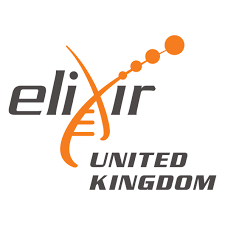GtoPdb is requesting financial support from commercial users. Please see our sustainability page for more information.
Contents:
Gene and Protein Information  |
||||||
| Species | TM | AA | Chromosomal Location | Gene Symbol | Gene Name | Reference |
| Human | - | 555 | 10q22.1 | PRF1 | perforin 1 | 2 |
Previous and Unofficial Names  |
| cytolysin | lymphocyte pore-forming protein | perforin-1 |
Database Links  |
|
| Alphafold | P14222 (Hs) |
| ChEMBL Target | CHEMBL5480 (Hs) |
| Ensembl Gene | ENSG00000180644 (Hs) |
| Entrez Gene | 5551 (Hs) |
| Human Protein Atlas | ENSG00000180644 (Hs) |
| KEGG Gene | hsa:5551 (Hs) |
| OMIM | 170280 (Hs) |
| Pharos | P14222 (Hs) |
| RefSeq Nucleotide | NM_005041 (Hs) |
| RefSeq Protein | NP_005032 (Hs) |
| UniProtKB | P14222 (Hs) |
| Wikipedia | PRF1 (Hs) |
Download all structure-activity data for this target as a CSV file 
| Inhibitors | |||||||||||||||||||||||||||||||||||||||||||||||||||
| Key to terms and symbols | View all chemical structures | Click column headers to sort | |||||||||||||||||||||||||||||||||||||||||||||||||
|
|||||||||||||||||||||||||||||||||||||||||||||||||||
| Immunopharmacology Comments |
| Perforin 1 is expressed only in the secretory granules of cytotoxic T cells and natural killer (NK) cells, and it is an essential component of the immune system. These cell types release perforin 1 close to target cells (e.g. virus-infected and neoplastic cells) in process known as the granule exocytosis pathway [1]. The released perforin 1 monomers rapidly oligomerise to form pores that penetrate the target cells and allow entry of pro-apoptopic granzymes into the target cell cytosol to trigger target cell death [4]. Small molecule inhibitors of perforin 1 function are predicted to exhibit immunosuppressive activity, and medicinal chemists are working to design drug-like perforin inhibitors [5-10,12]. |
| Cell Type Associations | ||||||
|
||||||
|
| Gene Expression and Pathophysiology Comments | |
| Mutations in the PRF1 gene, that reduce levels of functional perforin 1 protein, cause familial hemophagocytic lymphohistiocytosis 2 (FHL2) [3,11], which is a rare autosomal recessive immune disorder (onset in infancy or early childhood) that is characterised by immune dysregulation (uncontrolled activation of T cells and macrophages) with hypercytokinemia (overproduction of inflammatory cytokines), and reduced activity of cytotoxic T and natural killer cells. FHL is genetically heterogeneic, and defects in other genes or at different chromosomal locations underlie the various disease subclasses (FHL1-5). |
References
1. de Saint Basile G, Ménasché G, Fischer A. (2010) Molecular mechanisms of biogenesis and exocytosis of cytotoxic granules. Nat Rev Immunol, 10 (8): 568-79. [PMID:20634814]
2. Fink TM, Zimmer M, Weitz S, Tschopp J, Jenne DE, Lichter P. (1992) Human perforin (PRF1) maps to 10q22, a region that is syntenic with mouse chromosome 10. Genomics, 13 (4): 1300-2. [PMID:1505959]
3. Göransdotter Ericson K, Fadeel B, Nilsson-Ardnor S, Söderhäll C, Samuelsson A, Janka G, Schneider M, Gürgey A, Yalman N, Révész T et al.. (2001) Spectrum of perforin gene mutations in familial hemophagocytic lymphohistiocytosis. Am J Hum Genet, 68 (3): 590-7. [PMID:11179007]
4. Law RH, Lukoyanova N, Voskoboinik I, Caradoc-Davies TT, Baran K, Dunstone MA, D'Angelo ME, Orlova EV, Coulibaly F, Verschoor S et al.. (2010) The structural basis for membrane binding and pore formation by lymphocyte perforin. Nature, 468 (7322): 447-51. [PMID:21037563]
5. Miller CK, Huttunen KM, Denny WA, Jaiswal JK, Ciccone A, Browne KA, Trapani JA, Spicer JA. (2016) Diarylthiophenes as inhibitors of the pore-forming protein perforin. Bioorg Med Chem Lett, 26 (2): 355-360. [PMID:26711151]
6. Spicer JA, Huttunen KM, Jose J, Dimitrov I, Akhlaghi H, Sutton VR, Voskoboinik I, Trapani J. (2022) Small Molecule Inhibitors of Lymphocyte Perforin as Focused Immunosuppressants for Infection and Autoimmunity. J Med Chem, 65 (21): 14305-14325. [PMID:36263926]
7. Spicer JA, Lena G, Lyons DM, Huttunen KM, Miller CK, O'Connor PD, Bull M, Helsby N, Jamieson SM, Denny WA et al.. (2013) Exploration of a series of 5-arylidene-2-thioxoimidazolidin-4-ones as inhibitors of the cytolytic protein perforin. J Med Chem, 56 (23): 9542-55. [PMID:24195776]
8. Spicer JA, Miller CK, O'Connor PD, Jose J, Giddens AC, Jaiswal JK, Jamieson SMF, Bull MR, Denny WA, Akhlaghi H et al.. (2020) Inhibition of the Cytolytic Protein Perforin Prevents Rejection of Transplanted Bone Marrow Stem Cells in Vivo. J Med Chem, 63 (5): 2229-2239. [PMID:31525966]
9. Spicer JA, Miller CK, O'Connor PD, Jose J, Huttunen KM, Jaiswal JK, Denny WA, Akhlaghi H, Browne KA, Trapani JA. (2017) Benzenesulphonamide inhibitors of the cytolytic protein perforin. Bioorg Med Chem Lett, 27 (4): 1050-1054. [PMID:28110869]
10. Spicer JA, Miller CK, O'Connor PD, Jose J, Huttunen KM, Jaiswal JK, Denny WA, Akhlaghi H, Browne KA, Trapani JA. (2017) Substituted arylsulphonamides as inhibitors of perforin-mediated lysis. Eur J Med Chem, 137: 139-155. [PMID:28582670]
11. Stepp SE, Dufourcq-Lagelouse R, Le Deist F, Bhawan S, Certain S, Mathew PA, Henter JI, Bennett M, Fischer A, de Saint Basile G et al.. (1999) Perforin gene defects in familial hemophagocytic lymphohistiocytosis. Science, 286 (5446): 1957-9. [PMID:10583959]
12. Welz M, Eickhoff S, Abdullah Z, Trebicka J, Gartlan KH, Spicer JA, Demetris AJ, Akhlaghi H, Anton M, Manske K et al.. (2018) Perforin inhibition protects from lethal endothelial damage during fulminant viral hepatitis. Nat Commun, 9 (1): 4805. [PMID:30442932]
How to cite this page
Cytolytic pore-forming proteins: perforin 1. Last modified on 21/10/2022. Accessed on 14/12/2025. IUPHAR/BPS Guide to PHARMACOLOGY, https://www.guidetoimmunopharmacology.org/GRAC/ObjectDisplayForward?objectId=3100.

 Target has curated data in GtoImmuPdb
Target has curated data in GtoImmuPdb






